The Raging fire of Shiva
- Dinesh Rathod

- Jul 18, 2024
- 5 min read
By Dinesh Rathod / December 24, 2023
Eons ago, our sages realized the significance of Agni (fire) in the creation of the cosmos. They concluded that galaxies, stars and planets were created by the power of Agni.
They sensed that Agni nourishes the creation and will consume the entire creation during dissolution. Among all elements of creation (fire, water, air, earth and ether), Agni supports the structural integrity of the other elements.
That is why the Rigveda, the storehouse of cosmic knowledge, begins with the prayer to the Agni.
There are five Shiva temples in India specifically attributed to each of the five elements in India. Among them, Arunachalam Temple represents the Agni (The element Fire).
अग्निमीले पुरोहितं यज्ञस्य देवमृत्विजम्। होतारं रत्नधातमम्। ॥१॥
Arunachalam Temple
Tiruvannamalai, a city in Tamil Nadu is known for its spiritual significance. It comprises of many temples and ashrams well known over the world , but its mainly famous for having the India’s grandest and most revered Shiva temple called Arulmigu Arunachaleswarar Temple (Arunachalam), which lies at the foot of the subcontinent’s oldest rock formations.
The main temple of Arunachalam is an imposing structure with the marvelous Cholan architecture spread in about 25 acres. A panch bhoota (One of the Five Elements) Shivasthal, Shiva rages here among the elements as ‘Fire’.
Rising from the plains, the magnificent Arunachalam Temple rises against the backdrop of towering hills & is a vision of nature and godly. The geological surveys have classified the Arunachala hill as the classic archean model dating the rock formations to 3.8 billion years ago as compared to Himalayas, which are younger and date less than 50 million years ago.
The Lingam at Arunachalam is known as Agni Lingam. The reason why it does so becomes evident when one steps within the walls of the main temple. The walls are covered with black soot as if a big block of fire had enveloped it and left its residue. As one moves forward towards the inner sanctorum, one starts to experience the increase in heat. Although several fans are installed to cool the area , yet the place remains warm.
Engravings on the temple structure
The heat intensifies as one proceeds towards the innermost chamber where the Agni Linga is placed. The walls of the inner chamber is carbon black in color due to constant radiation. The priests while doing the Rudrabhishek (The process of the bathing the Linga with ingredients like milk, water, honey, sandal paste etc) of Lord Arunachaleshwar, are dripping in sweat as the heat is intense. The priests confirm that Lingam itself is hot when they touch it. The people who are within the inner sanctorum feel immense heat, claustrophobic and sweaty, even when the Lingam is about 20 feet away.
One does wonder the reason behind the Agni Lingam emitting so much heat than the rest of the lingams in India? Is there a special reason to cite this as an Agni Lingam?
The history of this temple comes into mind while searching for the answers. As per the Shiv Purana, Shiva revealed himself here as the Agni.
As Vishnu and Brahma were engaged in a terrible war to prove their supremacy over each other, Shiva appeared as an effulgent column of fire between them. Blazing incomparably with no beginning or end in sight, the flames dazzled the two gods who set forth to finding its end ,agreeing to concede defeat to the one who found it first. Lord Brahma in connivance with the Ketki flower tried to win the duel, but was caught , cursed and one of his heads severed by the blaze from the third eye of Shiva. People prayed for Shiva to be present here in his fire form that he had materialized here.
Brahma as Swan and Vishnu as boar during the duel.
An interesting perspective is also given by Independent researchers who are doing research on ancient history, archeology, and paranormal theory. While doing research on Arunachalam temple, these researchers have found similarity in the Agni Lingam and the “Tesla coil”.
Here is what they perceive:
“The Agni Lingam is a mass of energy, a form of fire that radiates heat and light. This unique type of energy is said to be produced in the underground part of the lingam.
What we see here is only the top of the structure, is it possible that the base of large cylindrical column extends underground and possibly has the source of extreme heat?
In one of the carvings in the temple complex, a man prays to this large cylindrical structure. But it does not look like a traditional lingam, it has many turns, many twisted coils in the cylindrical structure, and at the top, there are thunder bolts in all directions. It’s amazing because it’s strikingly similar to what’s called the Tesla coil.
Now what is a Tesla Coil? It’s a Wireless Power Transfer device, it doesn’t need wires but can transmit huge amounts of energy just through the air. Nikola Tesla, an extraordinary inventor, created it in 1891 to provide the world with free energy. If you look at the structure of the Tesla coils, It is a coiled cylinder with wires connected to a battery, from the top of which emanate electric arcs that look like thunder.
That is exactly what we see in the engraving except the base. Is the Agni Lingam an ancient coil? Did Nicolas Tesla base his Coil somehow on the principle of an ancient Agni Lingam? How else do you explain this 1200-year-old carving of coils wrapped around a cylinder and thunder emanating from the top?”.
If you look at the working of the Tesla coil, it generates a lot of heat and when you move your hand closer to it, you can feel the heat increase. It is the same feeling one experiences when they approach the Agni lingam. As one move towards the Lingam, they can literally feel the heat rising.
What could be the reason for installing the big Agni Lingam in the temple? What is the purpose of Tesla coil nowadays? Was the principle the same for both? The possible answer lies in the usage for Tesla coils. Nowadays Tesla Coils are mainly used by doctors to improve the general well-being of their patients known as electrotherapy.
This procedure not only relaxes the body, but also puts the mind into a deep, meditative state. Was the ancient Agni Lingam installed here to heal the body and mind of devotees? People from all over the world come here to practice deep meditation in this temple. When you stay in this temple, you will experience an unusual tranquility in your mind and body. Some of the world’s greatest saints like Ramana Maharishi have attained enlightenment here. Are all these things mere coincidences or is it all due to the healing effect/the effect of the radiation of the lingam? Did ancient people worship this lingam for physical and mental strength? Also why was it necessary to build such a large temple complex around this lingam?
This temple is one of the largest Lord Shiva temples in India and covers about 25 acres. The whole design and layout of this temple is massive, the main feature being the towers( Gopurams). Four large temple towers are erected near the outer walls, facing exactly the four cardinal points. What is the real purpose of these gigantic towers?
West Gopuram
Even after 1200 years, these are still the tallest towers in the temples of India. Did you know that Nikola Tesla built a giant tower called Wardencliff Tower to give free energy to the world? Tesla planned to transmit wireless energy to the whole world. Was this temple also built as a center for wireless energy transmission? Does the kalash(metal spire on top of temples) on the Gopurams act as an antenna?
Nandishwar
Well, whatever the case might be, the energy and the power that this place radiates, one is sure to dive into tranquility and calmness . The Arunachaleshwar temple , also called the Kailash of the South, is a sanctuary of peace in Tiruvannamalai and a must visit temple at least once in a lifetime to experience the divine.


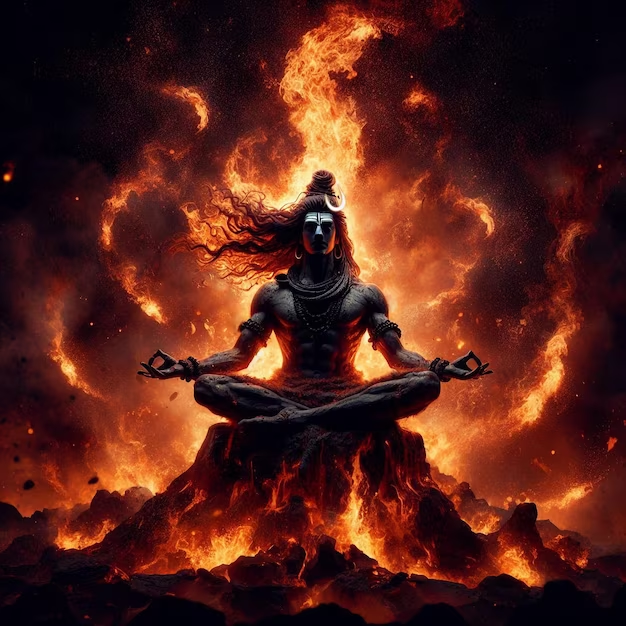

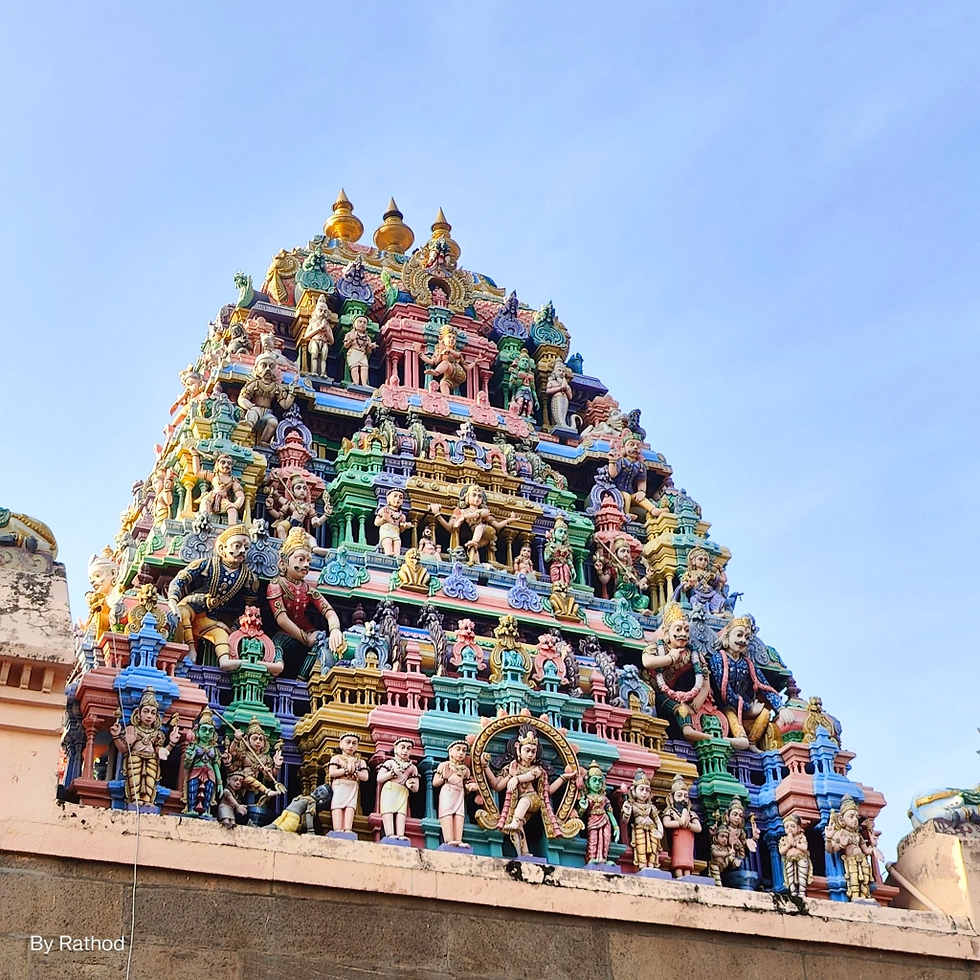
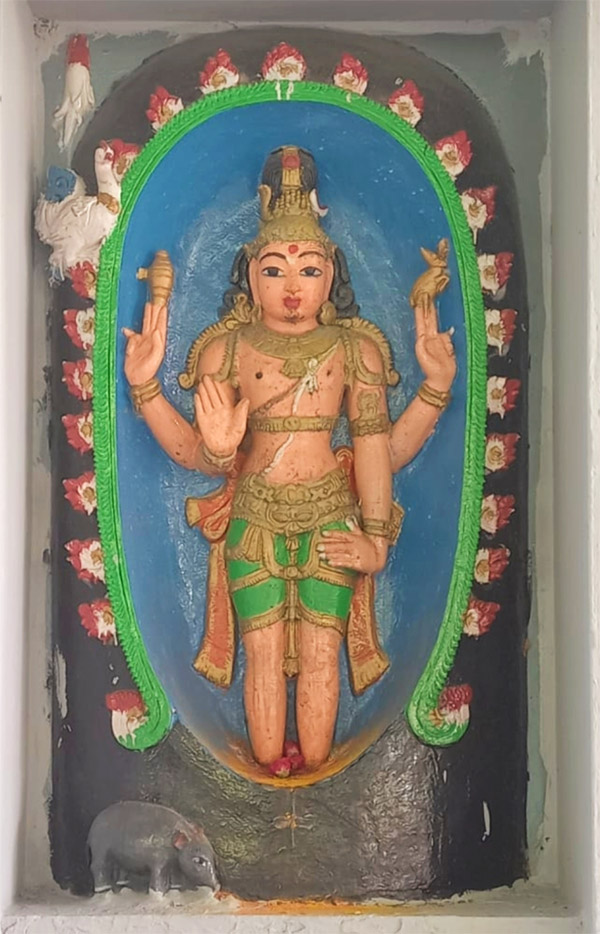
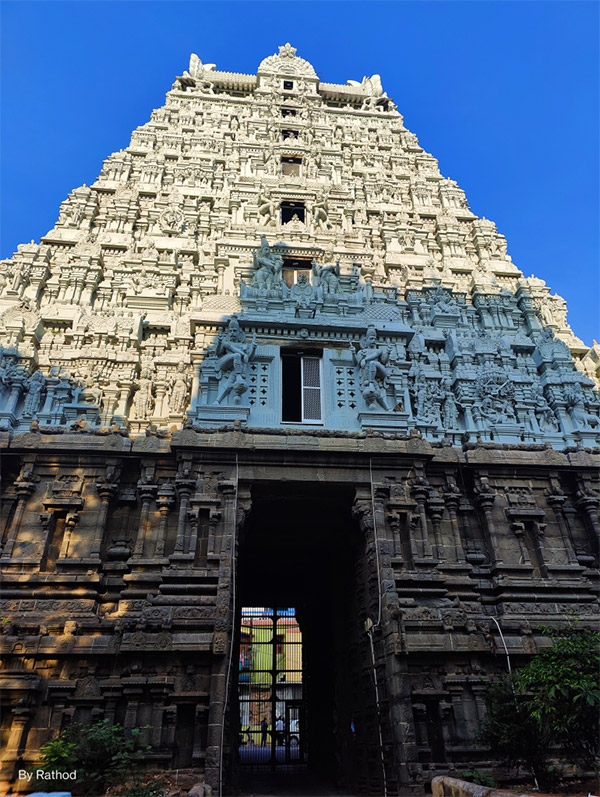
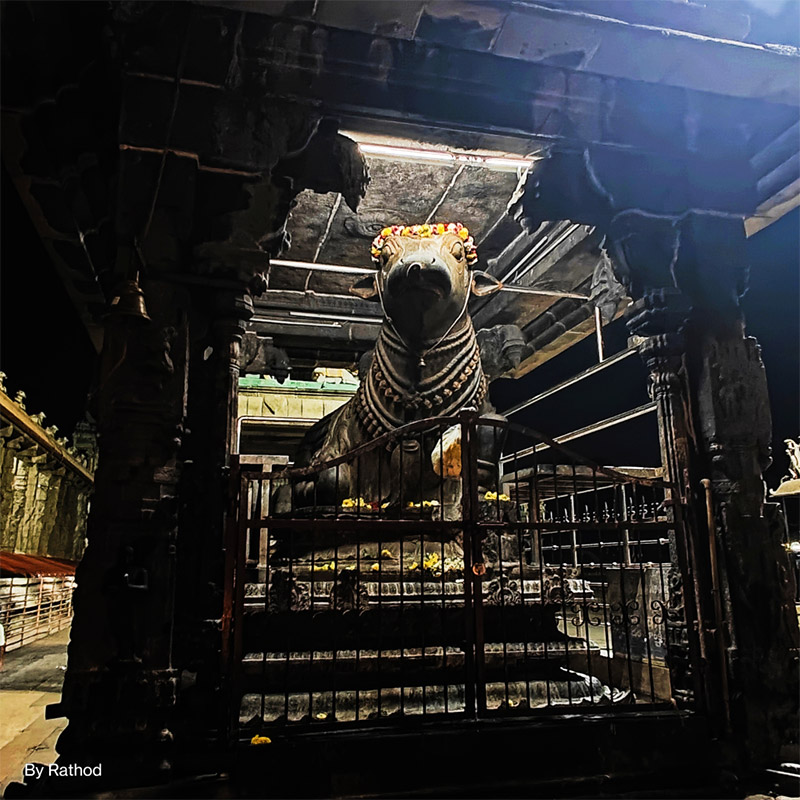



Comments